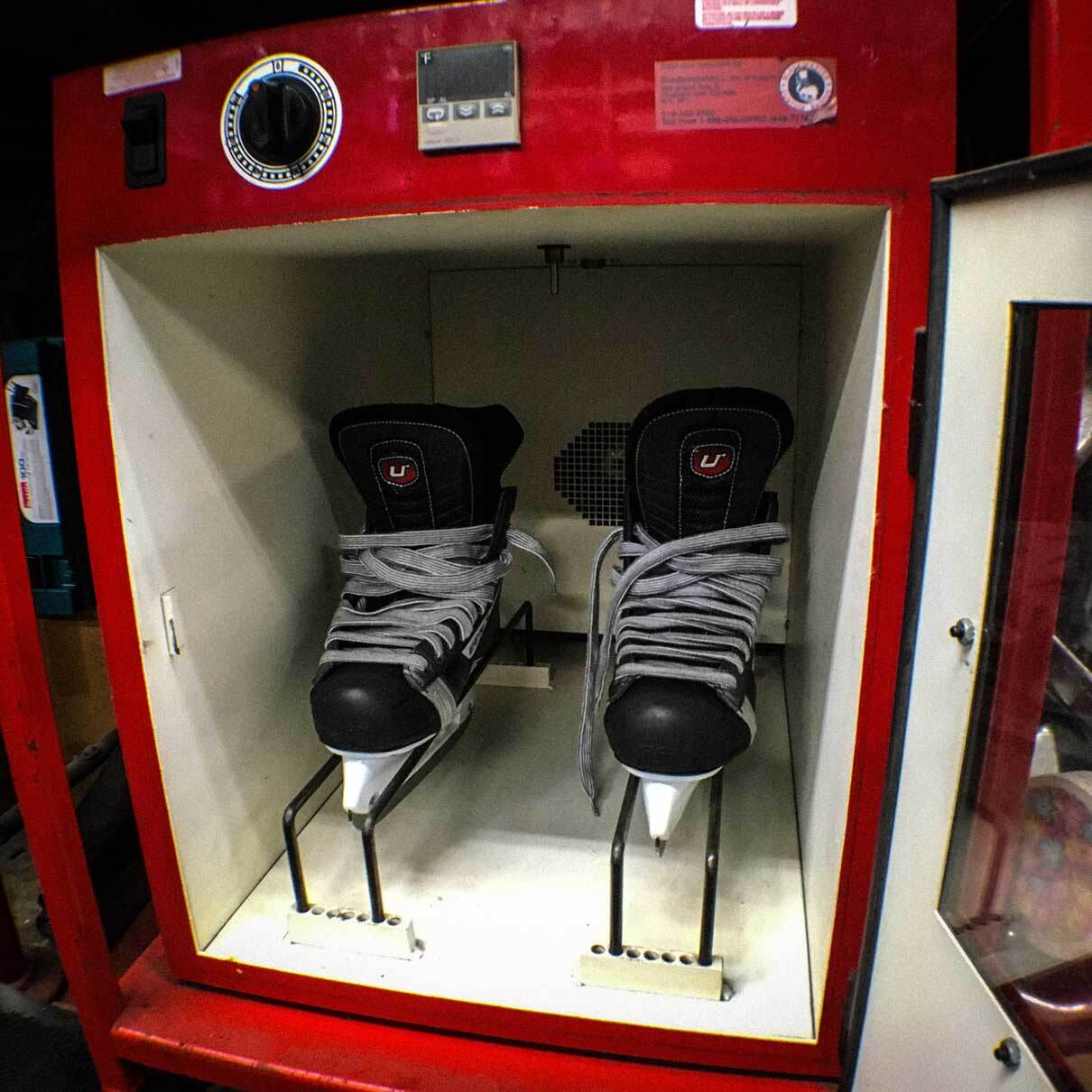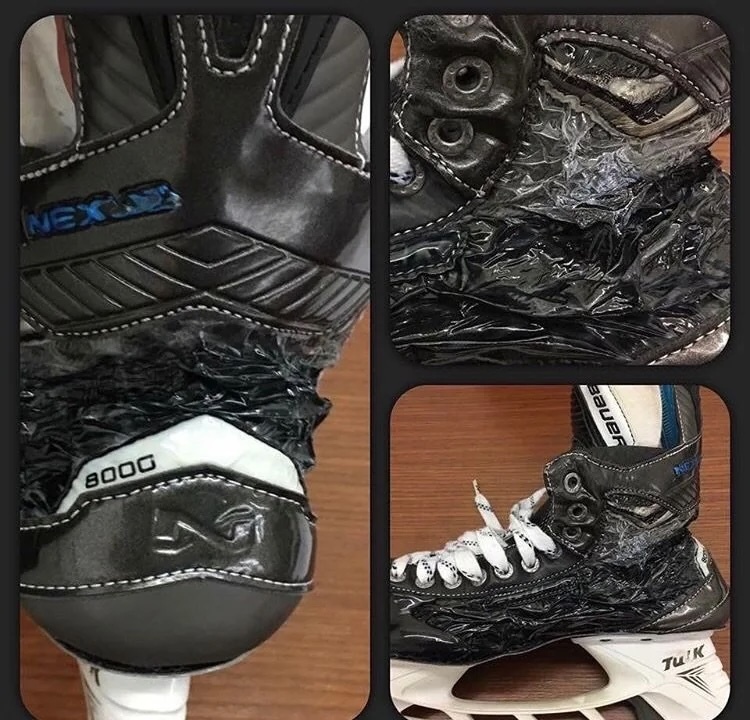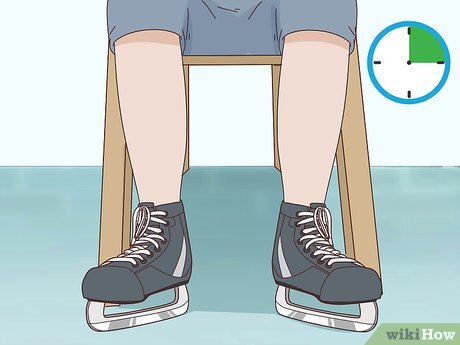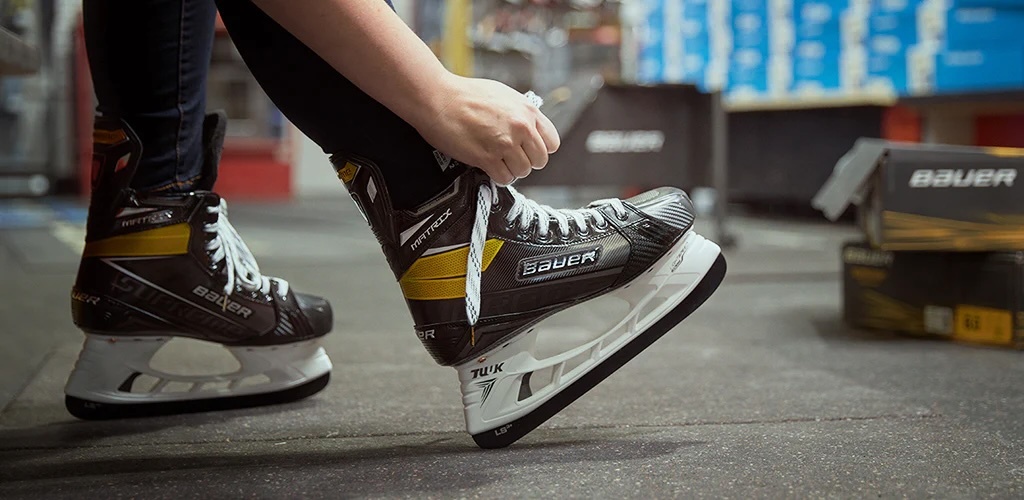New gear should help you skate better, not slow you down. If you just picked up new hockey skates, this guide shows how to break in hockey skates the right way so you gain comfort, edge control, and confidence fast. We’ll keep things simple: choose the right fit, follow a short on-ice plan, and use small tweaks that make a big difference in how your boots feel.
You’ll learn when skate baking makes sense, how skate stiffness influences your timeline, and what to do during the first few sessions for steady progress. We’ll also cover practical skate performance tips—from sharpening and lacing to sock choices (why thin, not thick socks, usually works best). And if hot spots remain after a proper break-in, we’ll show when custom hockey gear can solve stubborn fit issues and keep you comfortable for the long haul.
Why Breaking in Your Skates Matters
 New boots feel stiff for a reason: they’re built to support hard stops, quick cuts, and impacts. That stiffness needs a few sessions to shape to your foot; a smart plan for breaking in hockey skates prevents blisters and helps you trust your edges sooner. Think “firm but forgiving,” not tight and painful.
New boots feel stiff for a reason: they’re built to support hard stops, quick cuts, and impacts. That stiffness needs a few sessions to shape to your foot; a smart plan for breaking in hockey skates prevents blisters and helps you trust your edges sooner. Think “firm but forgiving,” not tight and painful.
For the best hockey skate fit, look for three cues: a snug wrap, secure heel lock, and toes that brush the cap when standing, then pull back slightly when you bend your knees. If the heel lifts, the volume or size is off; if the toes jam, you likely need a different size or model.
Before the first skate, inspect your holders, runners, and eyelets. Confirm the steel is straight and true. At home, lace up while seated to learn your hockey skate lacing techniques and spot hot areas. If you want a deeper dive on adjustments, our guide on how to lace your hockey skates breaks down how to lace hockey skates for performance without over-tightening. When you step off the ice, protect your edges and keep the boot dry with skate guards and accessories—small habits that make a big difference in your hockey skate care routine.
How Long Does It Take to Break in Hockey Skates?
 There’s no one timeline, yet most players feel marked improvement within 5–10 hours on ice—or even faster if the boot is thermoformable. Stiffer constructions take longer, while softer quarters shape sooner.
There’s no one timeline, yet most players feel marked improvement within 5–10 hours on ice—or even faster if the boot is thermoformable. Stiffer constructions take longer, while softer quarters shape sooner.
Clear signs you’re getting there: pressure points fade, foot wrap feels even through the cuff, and you stop thinking about your feet during reps. If you’re breaking in new skates quickly, go for shorter sessions first. Twenty to thirty minutes lets your feet settle without swelling too much. Then, you can work up to full practices. Track comfort across the entire skate; if discomfort grows late, revisit lacing or fit.
Different hockey skate types play a role, too. Player skates typically mold faster than goalie boots due to cuff design and forward flex. Wide or high-instep feet may need models with more volume, and youth boots often break in faster thanks to softer quarters. Not sure where to start on size? A practical hockey skate fitting guide rule is one to one-and-a-half sizes down from street shoes, then fine-tune length and width. That helps with how to choose hockey skate size, especially when comparing hockey skate brands that fit differently across lines.
Methods to Speed Up the Break-In Process
 Breaking in is easier when you follow a plan. The steps below show how to break in hockey skates efficiently—without shortcuts that harm the boot—so you build comfort in hockey skates from session one.
Breaking in is easier when you follow a plan. The steps below show how to break in hockey skates efficiently—without shortcuts that harm the boot—so you build comfort in hockey skates from session one.
Heat molding (baking): Most mid- and high-end boots support hockey skate heat molding. A shop oven warms the quarters so the boot forms to your foot as it cools. Baking accelerates break-in, helps reduce lace bite, and can smooth small pressure points. Be sure to follow the brand’s time and temperature guidelines and stand ice hockey skates naturally while cooling.
Short, frequent reps: Right after baking, stack short sessions with a rest day between; materials continue to set, and your feet adjust with less swelling. Combine this with light forward knee bends and ankle flex on the bench to help the boot articulate.
Sharpen for feel, not just sharpness: The right edge helps you adapt faster. Dial your hockey skate sharpening to fit the ice and your role; if you’re unsure about the best skate sharpening techniques, start with a common hollow, then adjust after a session or two based on bite and glide. For routine care and timing, see our guide on when to sharpen your skates.
Socks, pads, and insoles: Thin, moisture-wicking socks reduce friction, while adding a dab of moleskin or a gel pad at known hot spots prevents rubbing during early skates. Quality hockey skate insoles add arch support and stabilize the heel, which can improve wrap and reduce foot fatigue. These simple hockey skate comfort tips help you skate longer with fewer issues.
Lacing adjustments: Small changes = big comfort. Many skaters skip the very top eyelet for more forward flex during the first few sessions, then add it back once the cuff softens. Others use a mild lock-lace at the instep for heel hold. If you want a step-by-step walkthrough, our lacing article above also covers how to lace hockey skates for performance.
Do’s and Don’ts of Breaking in Skates
Follow these basics to protect comfort in your hockey skates and build habits that boost your feel and control:
Do
- Follow brand instructions for baking. Thermo boots respond well, and a shop tech can spot fit problems early.
- Ease into volume and forward flex with shorter sessions, then extend as comfort improves.
- Build a simple hockey skate care routine: wipe blades dry, open the tongue, remove footbeds, and air-dry the boot after every skate.
- Keep tabs on hollow, profile, and comfort. Small changes to steel and lacing can unlock hockey skate performance.
Don’t
- Over-tighten. Crushing the eyelets causes lace bite and numb toes; aim for an even tension.
- Bend or force the boot by hand, as excessive bending can break down support.
- Walk off-ice without guards; concrete chips edges and can compromise holders.
- Skip sharpening. Dull or uneven edges fight your stride, so consistent care is critical for hockey skate maintenance.
If issues persist—numbness, burning arches, heel lift—revisit hockey skate fitting and hockey skate sizing with a fitter. Insoles and small tongue pads can solve stubborn rub points, and different hockey skate types or lines within major hockey skate brands may match your foot better.

Pro Stock Hockey Tips: What the Pros Do Differently
Pros chase a repeatable feel; many will bake new boots, skate a light session, then tweak volume with inserts or tongue swaps. They also tune steel radius and hollow to match ice conditions and role, which improves agility and edge confidence.
Curious about upgrades and performance enhancing skate accessories? Browse skate guards and accessories, or personalize your setup with custom hockey equipment. If you’re considering a new model of skates, use a hockey skate buying guide approach: fit first, then flex pattern, then features.
Players who add smart accessories—gel pads at the ankle, supportive hockey skate insoles, moisture-wicking socks—often shorten break-in and avoid foot pain in skates. Those small choices lead to lasting comfort, especially with high-stiffness boots.
Break In Smarter, Skate Better
A careful break-in gives you consistent support and clean edges, which means stronger pushes and tighter turns. Keep your hockey skate maintenance tips simple: dry the boot fully, store steel with soakers, use guards in the rink, and sharpen based on hours and feel. Off the ice, strength and mobility work supports technique; our guide to off-season workouts for hockey players shares easy routines that carry into the season.
Ready to upgrade or replace a worn pair? Compare hockey skate types, check size against your notes, and choose a model that matches your stride and volume. If you want to check out new lines or sizes, explore our Pro Stock skate collection today.
While you’re there, read up on hockey skate maintenance tips and edge care in our sharpening guide, then practice your hockey skate lacing techniques until they feel second nature. And if you need a stick to match your stride, our article on choosing the best hockey stick rounds out your setup.


